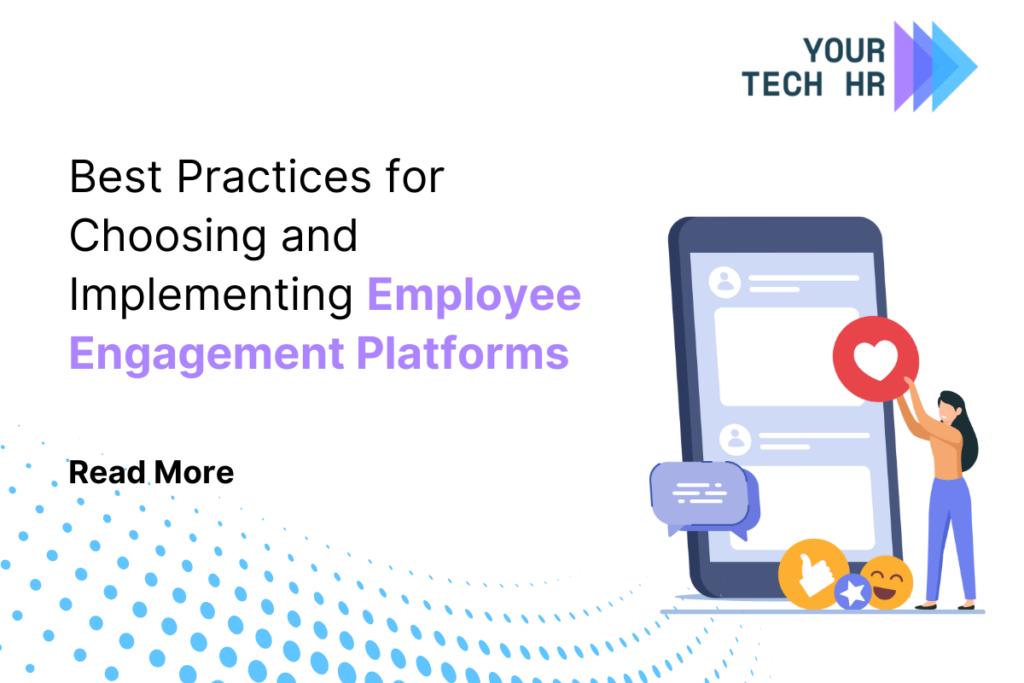In today’s competitive business landscape, fostering a motivated and engaged workforce is more critical than ever. Employee engagement platforms have emerged as essential tools for organizations looking to enhance employee satisfaction, improve productivity, and cultivate a positive organizational culture. However, choosing and implementing the right platform can be challenging. This blog will explore the best practices for employee engagement platforms, focusing on how to effectively select and implement these solutions to maximize their impact.
Understanding Employee Engagement
Employee engagement refers to the emotional commitment an employee has toward their organization and its goals. Engaged employees are more likely to be productive, motivated, and loyal. They actively participate in their work, contribute to team success, and go above and beyond to achieve organizational objectives.
The Importance of Employee Engagement
The significance of employee engagement is evident in several key areas:
- Increased Productivity: Engaged employees tend to be more productive, directly impacting organizational performance.
- Improved Retention Rates: Organizations with high levels of employee engagement experience lower turnover rates, reducing recruitment costs.
- Enhanced Customer Satisfaction: Engaged employees provide excellent customer service, leading to improved customer loyalty.
- Positive Workplace Culture: High levels of engagement contribute to a positive workplace culture where employees feel valued and supported.
- Better Financial Performance: Research shows organizations with engaged employees tend to outperform competitors financially.
Best Practices for Implementing Employee Engagement Platforms
1. Develop a Comprehensive Implementation Plan
A clear implementation plan ensures smooth execution.
- Set Clear Timelines: Define phases for rollout, training, and evaluation.
- Assign Responsibilities: Designate team members to oversee each stage.
2. Provide Comprehensive Training
Training ensures employees are comfortable using the platform.
- Hands-On Training: Conduct practical sessions for real-time platform usage.
- Ongoing Support Resources: Provide user guides and video tutorials for reference.
3. Foster Open Communication
Transparent communication ensures smooth adoption.
- Regular Updates: Share updates via newsletters or team meetings.
- Feedback Channels: Establish a system to collect employee feedback for improvement.
4. Monitor Performance Metrics
Track and analyze performance to gauge platform success.
- Analyze Data Trends: Use platform analytics to measure participation rates and feedback scores.
- Adjust Strategies as Needed: Optimize strategies based on performance insights.
5. Recognize and Reward Participation
Incentivizing participation ensures sustained engagement.
- Incentivize Participation: Offer rewards for active platform users.
- Celebrate Milestones: Recognize achievements related to engagement initiatives.
Challenges of Implementing Employee Engagement Platforms
Despite the benefits, organizations may face challenges:
1. Resistance to Change
Employees may resist new tools due to unfamiliarity.
- Communicate Clearly: Highlight the benefits of the platform to employees.
2. Data Privacy Concerns
Employee concerns about data misuse can hinder adoption.
- Building Trust: Establish transparent data privacy policies and ensure compliance.
3. Integration with Existing Systems
Integration challenges with HR systems may arise.
- Comprehensive Integration Strategy: Plan for seamless system alignment.
Future Trends in Employee Engagement Platforms
Looking ahead, trends shaping employee engagement platforms include:
1. AI-Powered Tools
AI enhances engagement by automating tasks and offering data-driven insights.
2. Focus on Diversity & Inclusion
Future platforms will include tools for promoting diversity and improving inclusivity.
3. Enhanced Mobile Accessibility
With remote work rising, mobile-friendly platforms ensure access from anywhere.
Conclusion
Understanding and applying the best practices for employee engagement platforms is essential for organizations aiming to boost employee satisfaction and productivity. By selecting the right tools and implementing them effectively, businesses can create a positive workplace culture and achieve significant ROI. Embrace innovative employee engagement strategies to drive success and stay ahead in today’s competitive environment.


